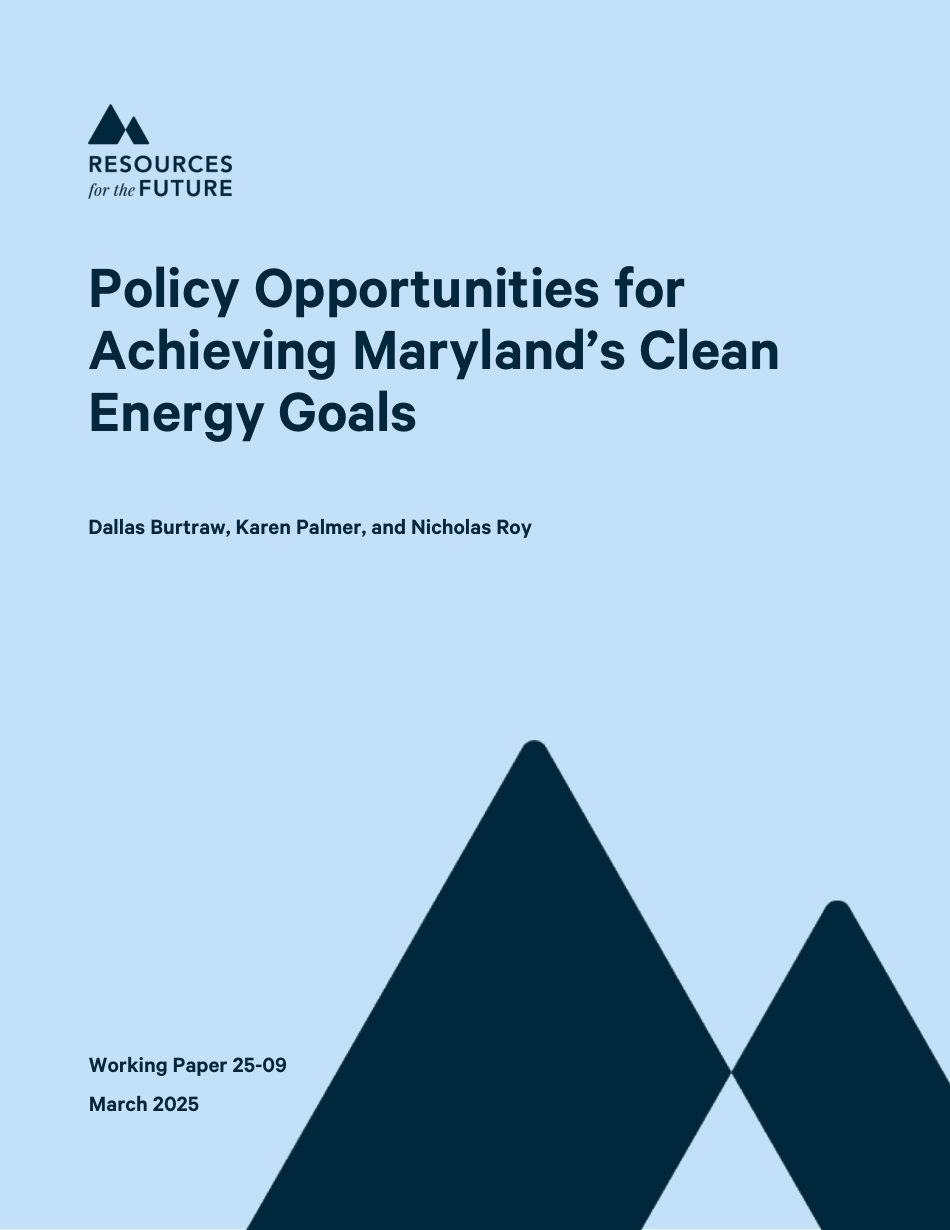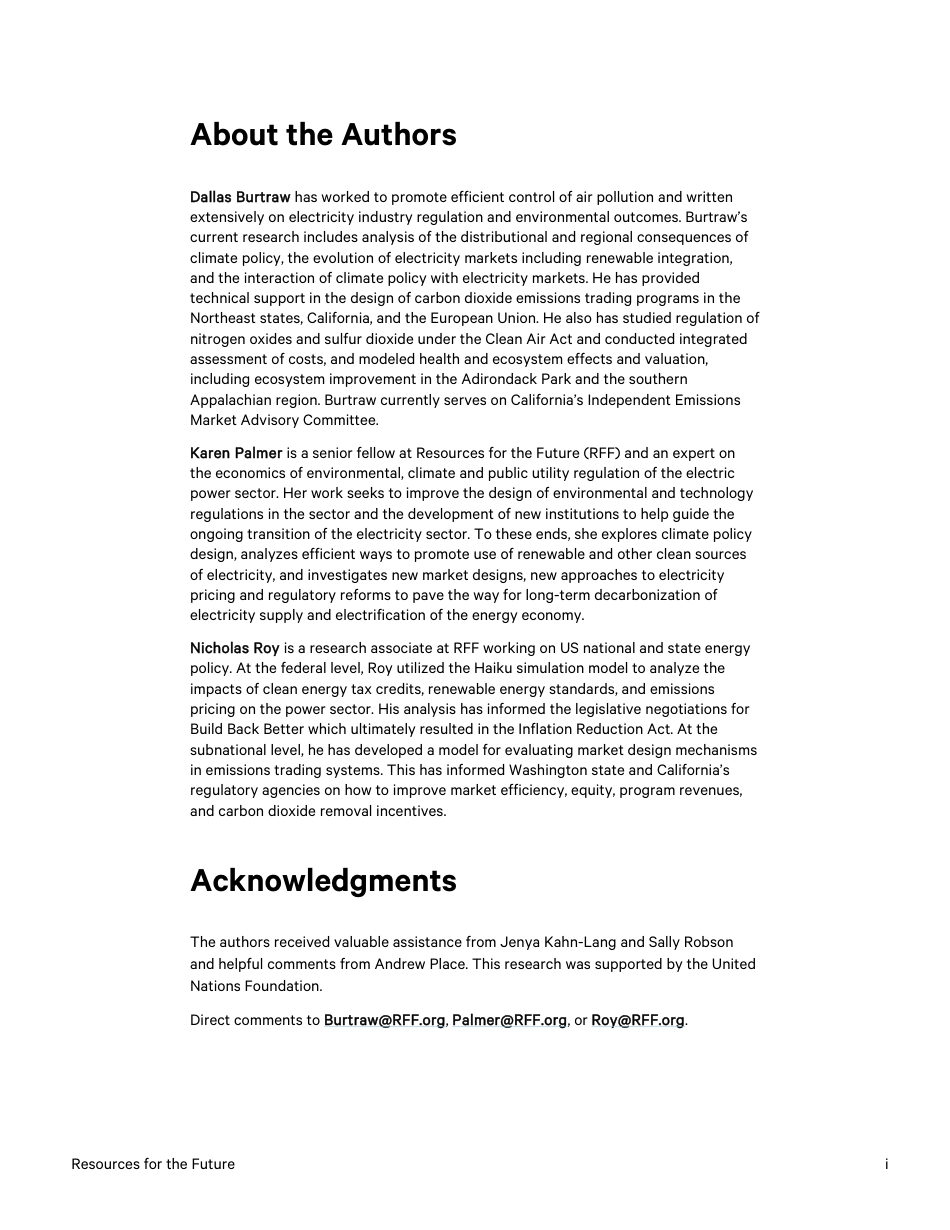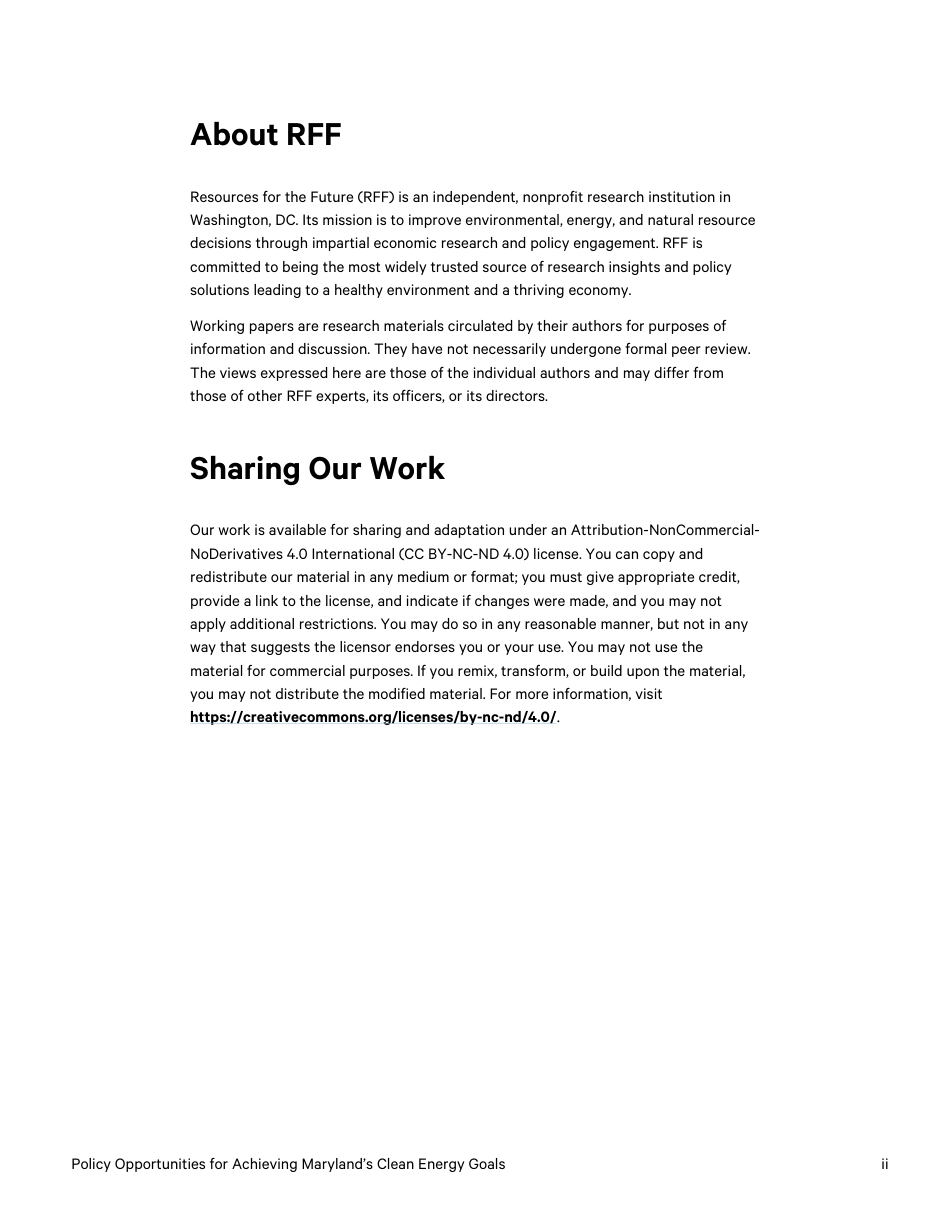PolicyOpportunitiesforAchievingMaryland’sCleanEnergyGoalsDallasBurtraw,KarenPalmer,andNicholasRoyWorkingPaper25-09March2025ResourcesfortheFutureiAbouttheAuthorsDallasBurtrawhasworkedtopromoteefficientcontrolofairpollutionandwrittenextensivelyonelectricityindustryregulationandenvironmentaloutcomes.Burtraw’scurrentresearchincludesanalysisofthedistributionalandregionalconsequencesofclimatepolicy,theevolutionofelectricitymarketsincludingrenewableintegration,andtheinteractionofclimatepolicywithelectricitymarkets.HehasprovidedtechnicalsupportinthedesignofcarbondioxideemissionstradingprogramsintheNortheaststates,California,andtheEuropeanUnion.HealsohasstudiedregulationofnitrogenoxidesandsulfurdioxideundertheCleanAirActandconductedintegratedassessmentofcosts,andmodeledhealthandecosystemeffectsandvaluation,includingecosystemimprovementintheAdirondackParkandthesouthernAppalachianregion.BurtrawcurrentlyservesonCalifornia’sIndependentEmissionsMarketAdvisoryCommittee.KarenPalmerisaseniorfellowatResourcesfortheFuture(RFF)andanexpertontheeconomicsofenvironmental,climateandpublicutilityregulationoftheelectricpowersector.Herworkseekstoimprovethedesignofenvironmentalandtechnologyregulationsinthesectorandthedevelopmentofnewinstitutionstohelpguidetheongoingtransitionoftheelectricitysector.Totheseends,sheexploresclimatepolicydesign,analyzesefficientwaystopromoteuseofrenewableandothercleansourcesofelectricity,andinvestigatesnewmarketdesigns,newapproachestoelectricitypricingandregulatoryreformstopavethewayforlong-termdecarbonizationofelectricitysupplyandelectrificationoftheenergyeconomy.NicholasRoyisaresearchassociateatRFFworkingonUSnationalandstateenergypolicy.Atthefederallevel,RoyutilizedtheHaikusimulationmodeltoanalyzetheimpactsofcleanenergytaxcredits,renewableenergystandards,andemissionspricingonthepowersector.HisanalysishasinformedthelegislativenegotiationsforBuildBackBetterwhichultimatelyresultedintheInflationReductionAct.Atthesubnationallevel,hehasdevelopedamodelforevaluatingmarketdesignmechanismsinemissionstradingsystems.ThishasinformedWashingtonstateandCalifornia’sregulatoryagenciesonhowtoimprovemarketefficiency,equity,programrevenues,andcarbondioxideremovalincentives.AcknowledgmentsTheauthorsreceivedvaluableassistancefromJenyaKahn-LangandSallyRobsonandhelpfulcommentsfromAndrewPlace.ThisresearchwassupportedbytheUnitedNationsFoundation.DirectcommentstoBurtraw@RFF.org,Palmer@RFF.org,orRoy@RFF.org.PolicyOpportunitiesforAchievingMaryland’sCleanEnergyGoalsiiAboutRFFResourcesfortheFuture(RFF)isanindependent,nonprofitresearchinstitutioninWashington,DC.Itsmissionistoimproveenvironmental,energy,andnaturalresourcedecisionsthroughimpartialeconomicresearchandpolicyengagement.RFFiscommittedtobeingthemostwidelytrustedsourceofresearchinsightsandpolicysolutionsleadingtoahealthyenvironmentandathrivingeconomy.Workingpapersareresearchmaterialscirculatedbytheirauthorsforpurposesofinformationanddiscussion.Theyhavenotnecessarilyundergoneformalpeerreview.TheviewsexpressedherearethoseoftheindividualauthorsandmaydifferfromthoseofotherRFFexperts,itsofficers,oritsdirectors.SharingOurWorkOurworkisavailableforsharingandadaptationunderanAttribution-NonCommercial-NoDerivatives4.0International(CCBY-NC-ND4.0)license.Youcancopyandredistributeourmaterialinanymediumorformat;youmustgiveappropriatecredit,providealin...



 VIP
VIP VIP
VIP VIP
VIP VIP
VIP VIP
VIP VIP
VIP VIP
VIP VIP
VIP VIP
VIP VIP
VIP